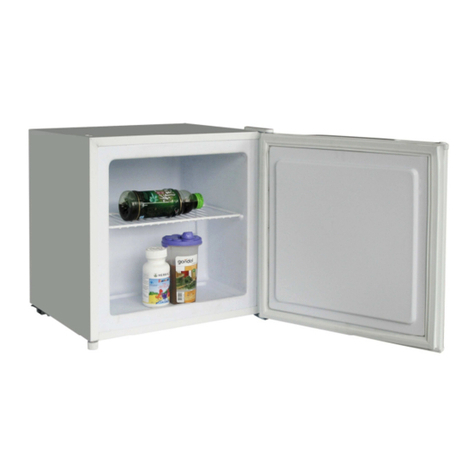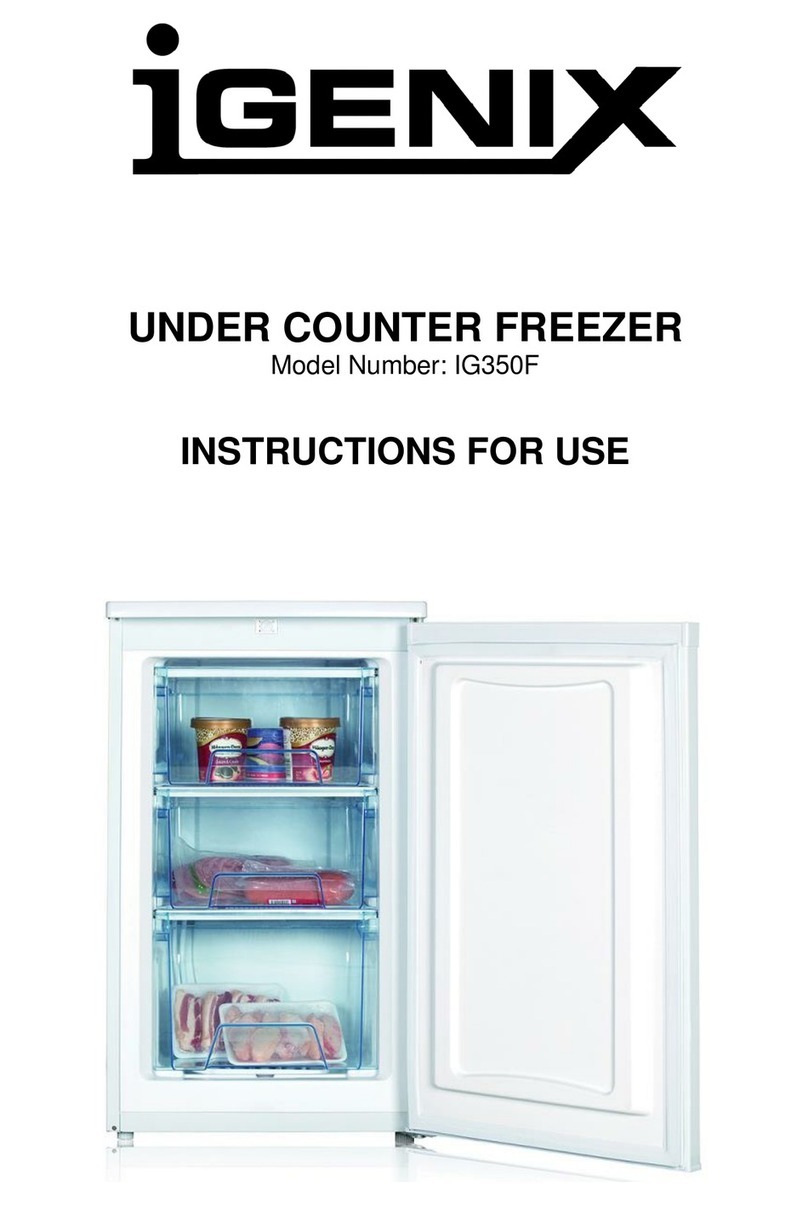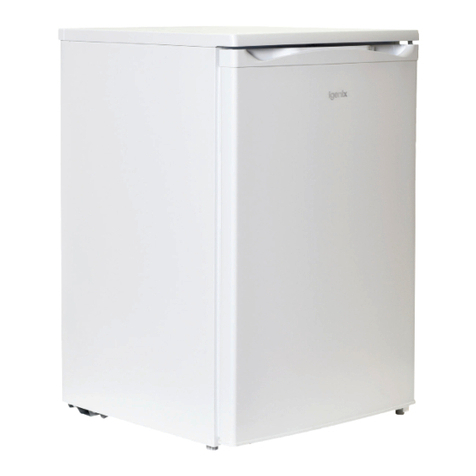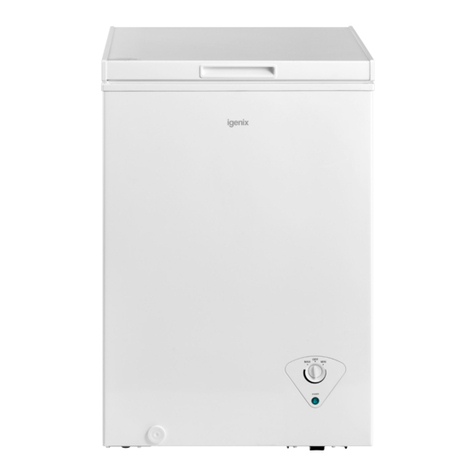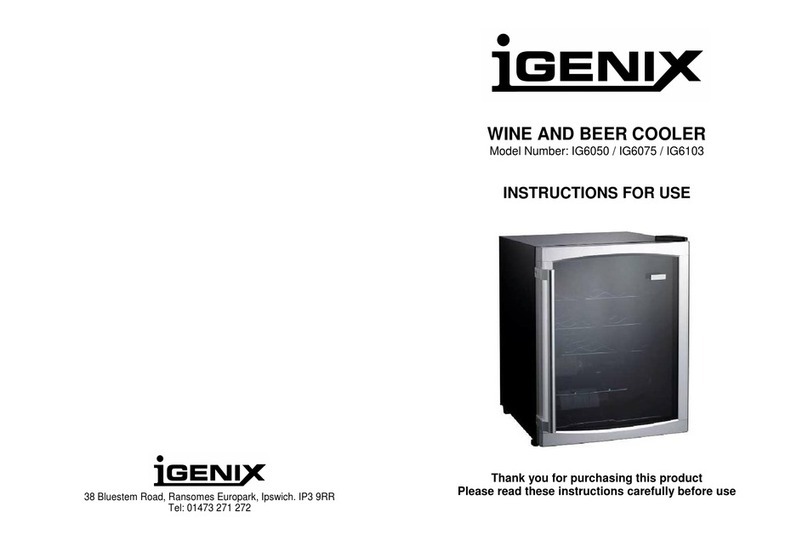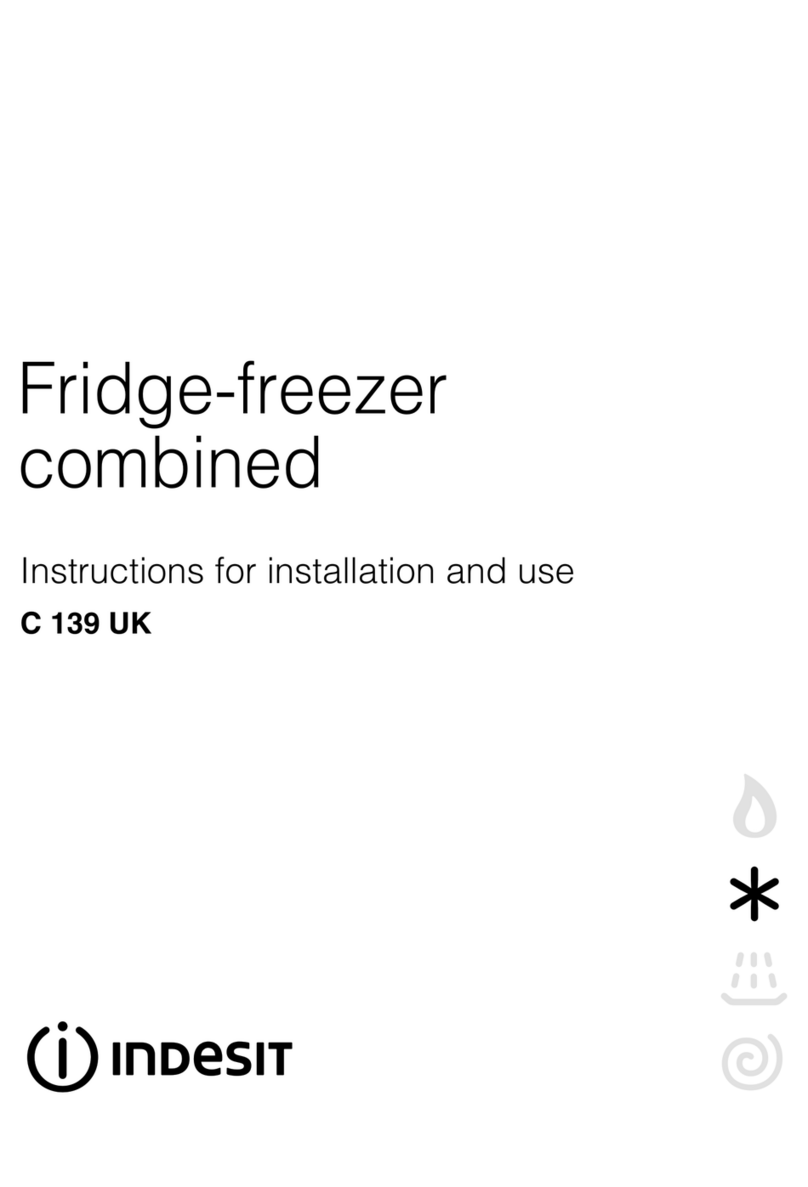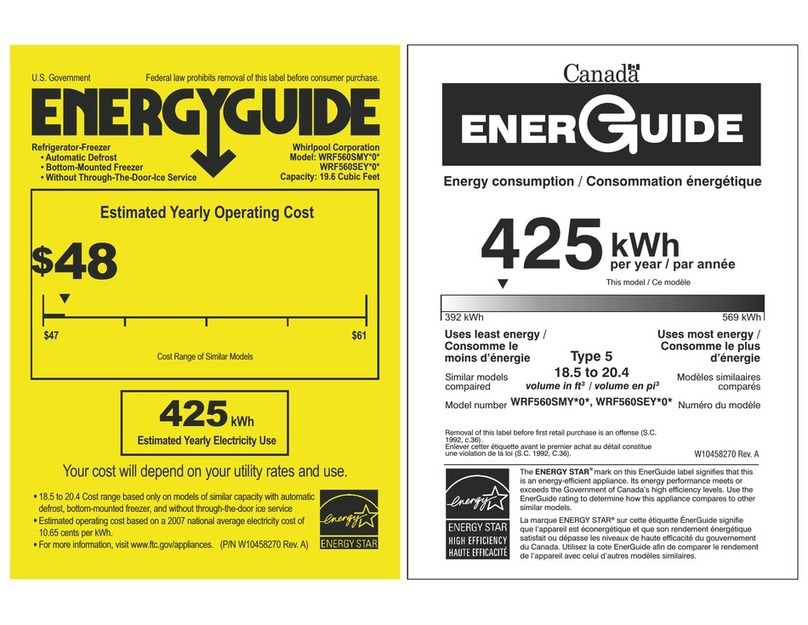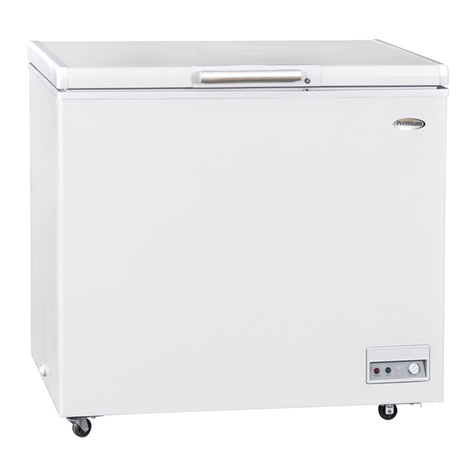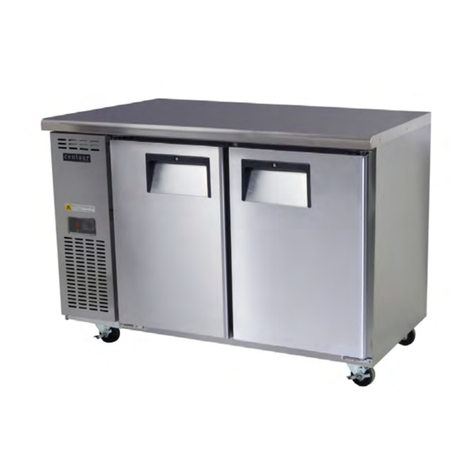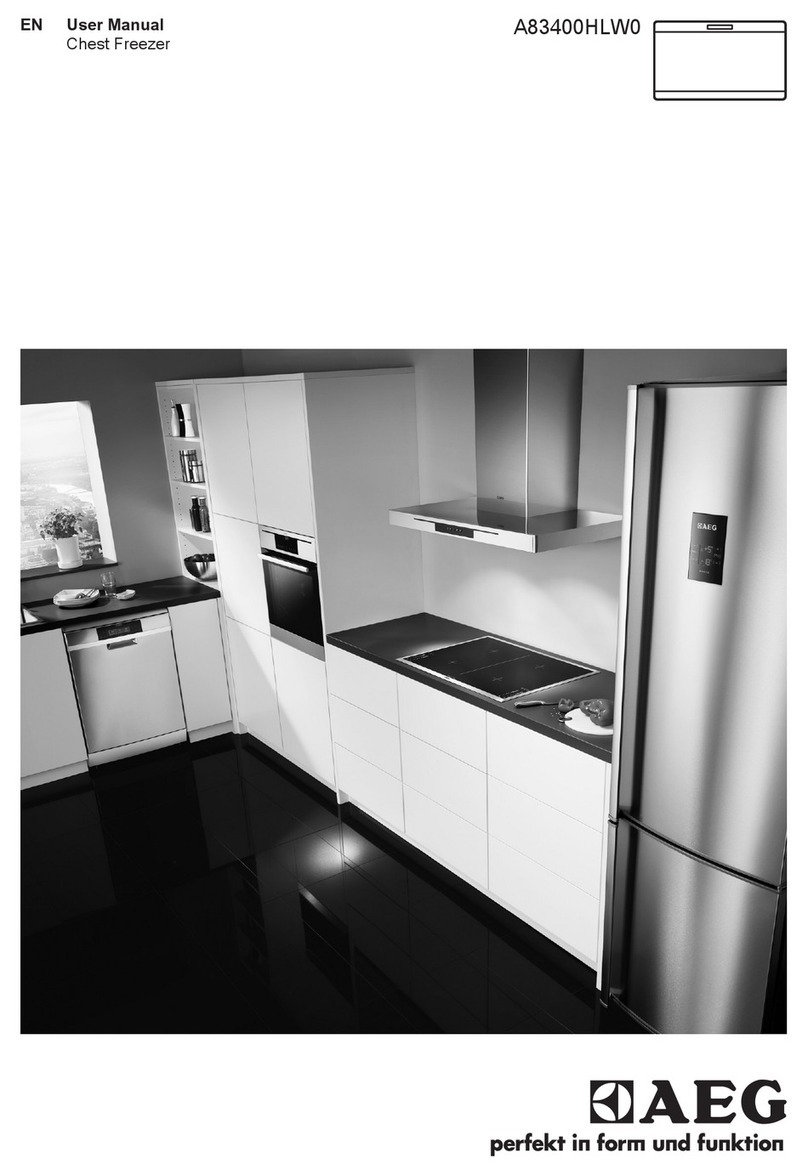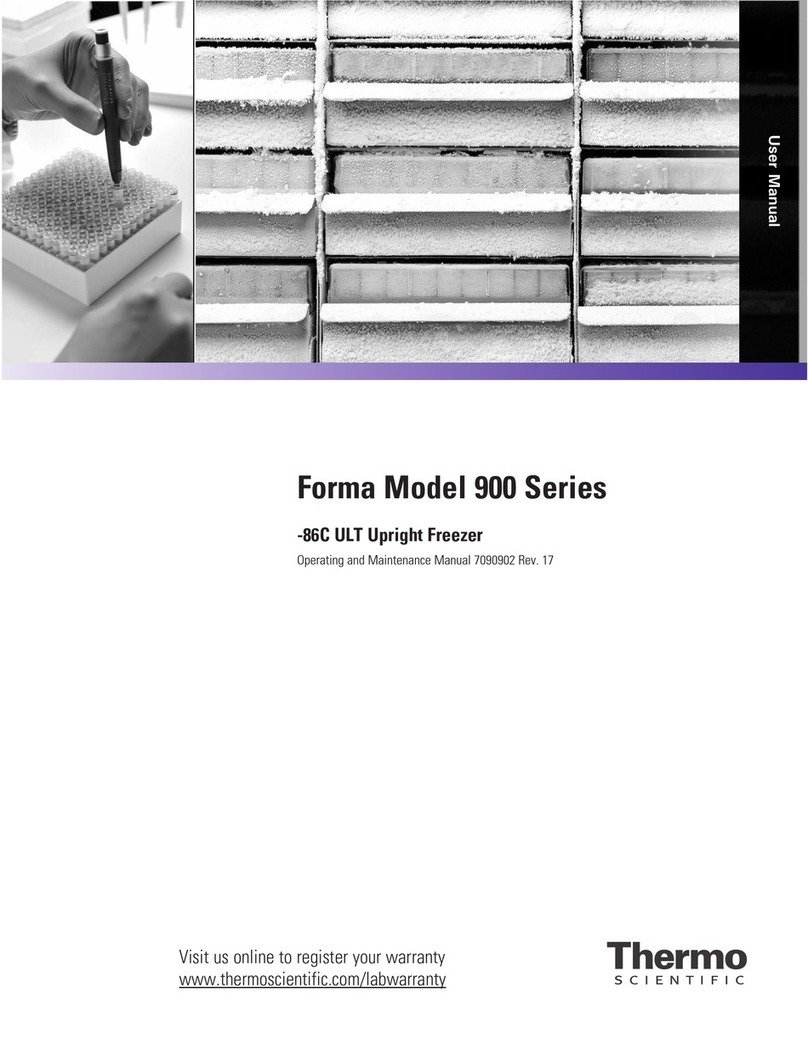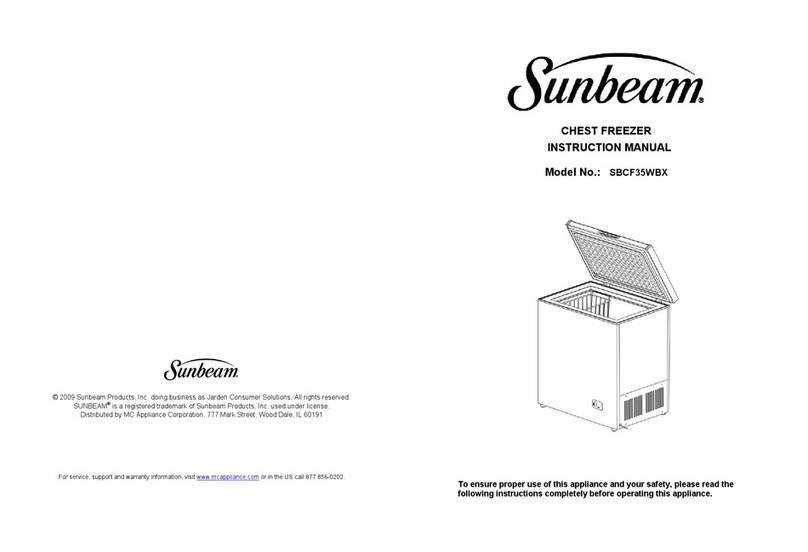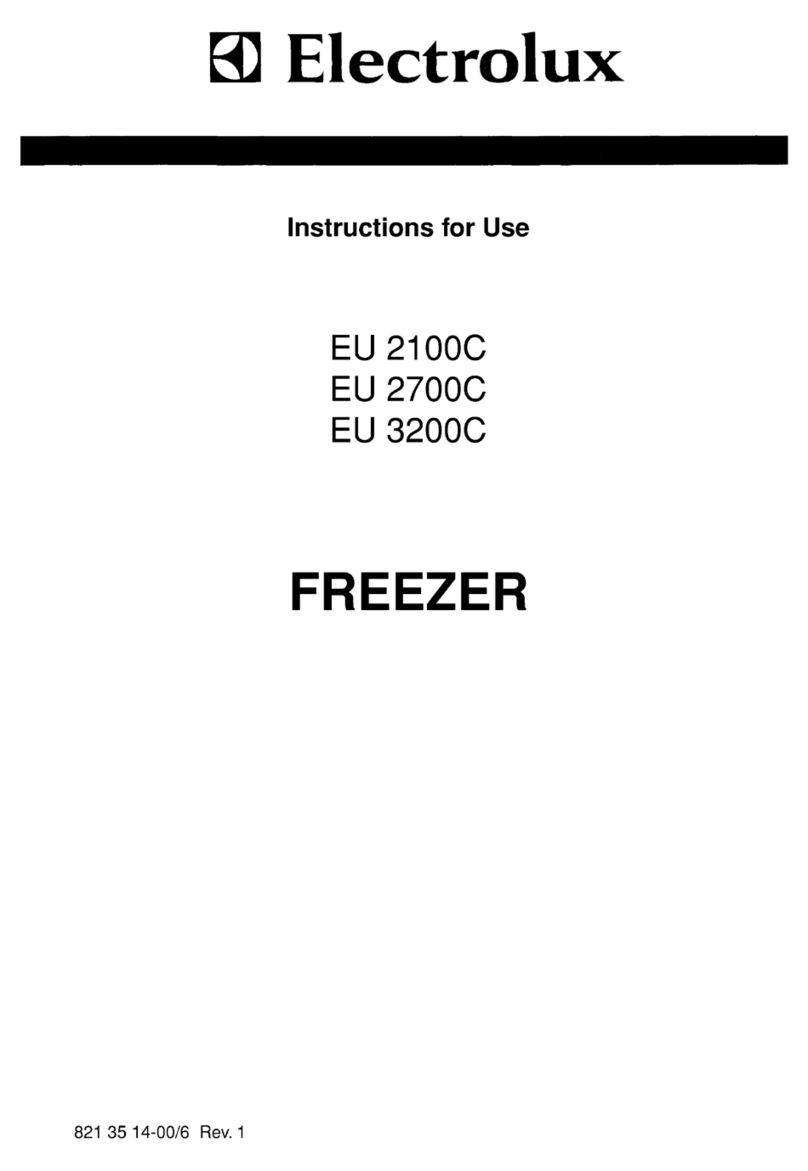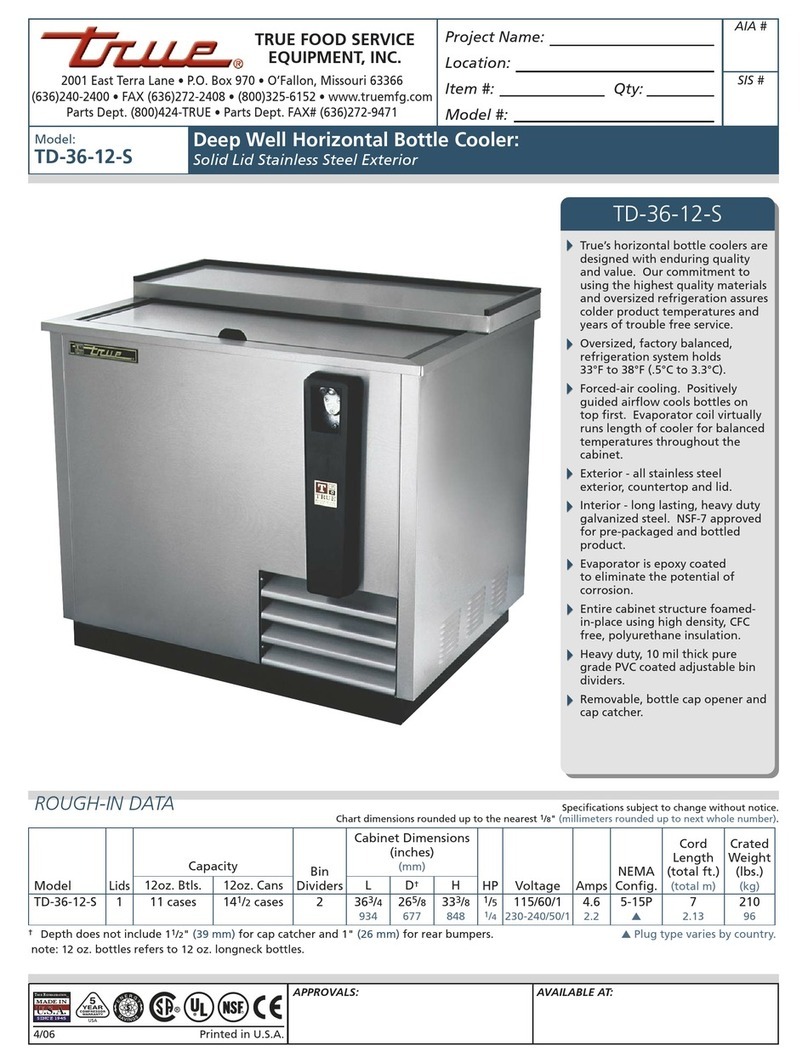iGenix IG3751 User manual

35L Counter Top Freezer with Lock
Please read these instructions carefully before use and retain for future reference
Before switching on your appliance,
always check for any damage which may have been caused in transit
IG3751 - White
IG6751 - Stainless Steel
Batch code:
USER MANUAL
For Models

2
CONTENTS
Important Safety Instructions...............................................3-4
Specications................................................................................5
Appliance Overview...................................................................5
Installation.................................................................................6-7
Operating Instructions...........................................................7-9
Cleaning and Maintenance ..................................................... 10
Trouble Shooting Guide.......................................................... 11
Fuse Replacement.................................................................... 12
Disposal Information............................................................... 12
Igenix Warranty Terms & Conditions ............................ 14-15

3
IMPORTANT SAFETY INSTRUCTIONS
Read and follow all of the instructions even if you feel you are
familiar with the product, and nd a place to keep this manual handy
for future reference.
Important: This product is intended for domestic use only, for
food refrigeration storage only.
When using electrical appliances, basic safety precautions should
always be followed:
• Do not operate the appliance with a damaged cord or plug, after
it malfunctions or has been dropped or damaged in any way.All
electrical repairs must be carried out by a qualied electrician.
Inadequate repairs may result in a major source of danger for the
user and invalidate the warranty.
• The operating voltage of the appliance is 220-240V at 50Hz.
Check the voltage of the appliance matches the household
voltage on the rating label and specication for further details.
• Use of an extension cord is not recommended with this product.
• This appliance can be used by children aged from 8 years
and above if they have been given supervision or instruction
concerning the use of the appliance in a safe way and understand
the hazards involved.
• Children aged from 3 to 8 years are allowed to load and unload
this appliance.
• Cleaning and user maintenance shall not be made by children
• Keep the appliance and its cord out of reach of children.
• Children shall not play with the appliance.
• This appliance can be used by persons with reduced physical,
sensory or mental capabilities or lack of experience and
knowledge if they have been given supervision or instruction
concerning use of the appliance in a safe way and understand the
hazards involved.
• Always unplug the appliance before attempting to move.When

4
WARNING: The appliance is heavy and care is needed when
unpacking and moving it. Get extra help and only hold the
appliance by the casing – never hold by the door or the trim.
disconnecting from the electricity supply, pull the plug and not
the cord.
• This product is for indoor use only.
• Do not store explosive substances such as aerosol cans with a
ammable propellant in this appliance.
• Always keep the ventilation openings clear of obstruction. Should
they become blocked, clear them straight away.
• The refrigerant of this product is R600a which is ammable.
Ensure when moving the appliance or during installation that the
cooling system does not get damaged.
WARNING: Risk of child entrapment.
Before disposal of the old appliance, make sure that any locking
mechanisms have been broken off, doors have been removed
but shelves have been left in so that children cannot easily
climb inside.Also remove the plug so the appliance is unusable.
WARNING: When positioning the appliance, ensure the
supply cord is not trapped or damaged.
WARNING: Do not locate multiple portable socket-outlets
or portable power suppliers at the rear of the appliance.
WARNING: During using, service and disposal the appliance,
please pay attention to symbol as left side, which is located
on rear of appliance (rear panel or compressor. It’s risk of re
warning symbol. There are ammable materials in refrigerant
pipes and compressor. Please be far away re source during
using, service and disposal.

5
APPLIANCE OVERVIEW
SPECIFICATIONS
Model IG3751 / IG6751
Climate Class ST
Electric Protection Type I
Total Net Capacity (Litres) 34
Voltage (V) 220 – 240
Frequency (Hz) 50
Noise (dB) ≤ 41
Energy Consumption (kWh / 24h) 0.400
Refrigerant R600a / 21g
Gross Weight (Kg) 17
Interior Temperature (˚C) -12 to -18
1.
2.
4.
3.
1. Thermostat
2. Wire Shelf
3. Door
4. Adjustable Feet

6
Location & Air Circulation
When selecting a position for your freezer, you should make sure the table top is at and rm and the
room is well ventilated with an average room temperature of between 16˚C and 32˚C.
Locate your freezer away from sources of heat e.g. cookers, radiators, direct sunlight as extreme
temperatures will effect how efciently your freezer works.
If you are placing your freezer in an out-building such as a garage or annex, ensure that the freezer is
placed above the damp course. Failure to do this will result in condensation forming on the freezer
cabinet and could cause the freezer to rust and fail.
Never place the freezer in a wall recess or tted cabinets or furniture as this will not allow adequate
ventilation and cause a potential re hazard. Allow 20mm of space at the sides of the freezer and 50mm
above the freezer. Never push the freezer back against the wall, leave at least a 50mm gap.
Levelling
Once the freezer is positioned in its nal location, it can be leveled using the adjustable feet at the front
of the freezer until they are rmly placed on the counter top. Correctly leveling the freezer will stop any
rocking or vibration and keep the door aligned which helps the freezer run reliably and efciently.
Providing you follow the recommended ventilation requirements you will:
• Increase the life of the freezer.
• Minimise the risk of condensation on the outside of the freezer.
• Minimise the running costs.
• Minimise operating noises caused by vibration.
INSTALLATION

7
OPERATING INSTRUCTIONS
Before using your Freezer
Before placing food in the freezer, it needs to be cleaned by wiping the interior using warm water and a
soft cloth.Wipe the freezer completely dry before replacing the shelf.
Check that your power outlet is compatible with the plug supplied with the freezer.
IMPORTANT: Always allow at least 2 hours before turning on the freezer to allow the coolant uid
time to settle after the freezer is in place. Failure to do this may result in damage to the appliance and
such damage is not covered by the guarantee.
Door Fitting
The freezer door can be tted to open to either the left or the right depending on its location. The
appliance must be tilted and supported in order to carry this out. It is therefore advisable to get some
help during this procedure. Take care when tting and tightening screws.
To change the direction, please follow these instructions.
• Turn off the power.
• Remove the top hinge cover (6), hinge screws (1) and hinge (5) (right side).
• Lift the door and place on a padded surface to prevent scratching it.
• Remove the two screws (8) that hold the lower hinge (2) and mare sure to remove the
lower hinge (2)
• Remove the left front leg (4) and transfer it to the right side
• Remove the hole cover plate (7) to the right side
• Before placing this lower hinge (2), remove the bolt pin (9) and reverse the direction of the lower
hinge (2).Then install the lower hinge (2) onto the left side f the lower frame with 2 screws (8)
• Insert the bolt pin (9) to the lower hinge (20
• Set the door to its place making sure the door sits on the lower hinge (2)
• While holding the door in the closed position secure the upper hinge (5) in the top frame of left
side with two screws (1)
• Please remember to not tighten the two screws (1) until the top of the door is levelled with
the counter top.
• Install the upper hinge cover (6) on the upper hinge

8
Before placing any food in the freezer it is recommended to leave it 4 hours.This allows you to ensure
the freezer is working correctly and gives enough time to allow the temperature in the refrigerator to
drop to the correct level.
Using your Freezer
The ideal internal temperature of your freezer should be between -12˚C to -18˚C. Before turning on
the freezer, make sure that the temperature control, which is located at the back of the freezer is set
to NORMAL.Allow 4 hours before placing food in the freezer to allow the temperature to fall to the
correct level. If you wish to decrease the temperature in the freezer, turn the thermostat to the MAX
position and the internal freezer temperature will drop to -18˚C.
Your freezer must NOT be placed in a room where the temperature goes below 16˚C or above 32˚C for
prolonged periods, as the internal freezer temperature will not be maintained.
Precautions
The freezer is capable of producing very cold temperatures which may cause injury if safety precautions
are not observed.
Caution: Do not touch ice with bare hands as this could cause ice burns
• Do not attempt to freeze carbonated drinks suck as zzy pop, mineral water, champagne etc, as the
bottles may break when frozen.
• The freezer must only be used for storing edible foodstuffs.
• Frozen food that has been thawed should not be re-frozen.
Storing Food in Your Freezer
Food which has been purchased frozen should be kept in its original packaging. Maximum storage times
and expiry dates are usually given on the food packaging.
• Do not attempt to re-freeze food that has thawed or partially thawed.
• When cooking food you must ensure it has thoroughly thawed, especially when dealing with
poultry and seafood.
• Do not overload the freezer and always allow space between the packages of food. This ensures
that cold air is free to circulate, preventing the food packaging from sticking together.
• When removing ice cubes, it may help to hold the tray under running water for a few seconds in
order to loosen the ice cubes.
• When freezing hot food allow it to cool before placing it in the freezer.Always store it away from
food which is already frozen.
• This freezer can freeze up to 2kg of food for 24 hours.
To avoid contamination of food, please respect the following instructions
• Opening the door for long periods can cause a signicant increase of the temperature in the
compartments of the appliance.
• Clean regularly surfaces that can come in contact with food and accessible drainage systems.
• Clean water tanks if they have not been used for 48h; ush the water system connected to a water
supply if water has not been drawn for 5 days.
• Store raw meat and sh in suitable containers in the refrigerator, so that it is not in contact with or
drip onto other food.
• Two-star frozen-food compartments (if they are presented in the appliance) are suitable for storing
pre-frozen food, storing or making ice-cream and making ice cubes.
• One-, two- and three -star compartments (if they are presented in the appliance) are not suitable for
the freezing of fresh food.
• If the appliance is left empty for long periods, switch off, defrost, clean, dry and leave the door open to
prevent mould developing within the appliance

9
Pre Packed Foods
Pre packed commercially frozen food should be stored in accordance with the manufacturer’s
instructions for a 4 star frozen food compartment and should be put in the freezer as soon as possible
after purchase.Your freezer provides for long term storage which generally means up to 3 months but
the length of time can vary and it is important to follow the recommended times shown on the packets
of commercially frozen food.
Refrigerator compartments Type of food
Door or balconies of fridge compartment • Foods with natural preservatives, such as jams, juices,
drinks, condiments.
• Do not store perishable foods.
Crisper drawer (salad drawer)
• Fruits, herbs and vegetables should be placed sepa-
rately in the crisper bin.
• Do not store bananas, onions, potatoes, garlic in the
refrigerator.
• Fridge shelf – bottom
• Chiller (box/drawer)
Raw meat, poultry, sh (for short-term storage)
Fridge shelf – middle Dairy products, eggs
Fridge shelf – top Foods that do not need cooking, such as ready-to-eat
foods, deli meats, leftovers.
Freezer drawer(s)/shelf • Foods for long-term storage.
• Bottom drawer/shelf for raw meat, poultry, sh.
• Middle drawer/shelf for frozen vegetables, chips.
• Top drawer/shelf for ice cream, frozen fruit, frozen
baked goods.
Defrosting
After a period of time, frost will build up in the freezer. Regular defrosting will therefore be necessary
to maintain the efciency of the freezer. Defrosting should be carried out if the frost build up begins to
interfere with the food storage.The best time to defrost your freezer is when the amount stored in the
freezer is low, for example before you go shopping.To defrost the freezer follow the steps below:
1. Take out the frozen food, turn the freezer off at the mains supply and leave the door open. Ideally the
frozen food should be put into another freezer or refrigerator.To speed up the defrosting process, a
bowl of hot water can be placed inside the freezer to raise the temperature.
2. Remove the ice with an ice scrapper. Do not use pointed or sharp edged objects such as knives, forks
or screw drivers to remove the ice.
3. When all traces of ice have been removed and defrosting is completed, clean away any water and
wipe your freezer dry.
4. Clean your freezer as described below, plug in and switch the freezer back on. Allow enough time for
the temperature to fall to the correct level before putting the food back in to the freezer.

10
CLEANING AND MAINTENANCE
Switch off the electrical supply and remove the plug from the socket before cleaning.
Interior
1. Remove all food from the freezer and cover to help keep it cool.
2. Remove the shelf from the freezer and defrost following the instructions above.Wash the shelf in
warm soapy water with a soft cloth and dry thoroughly. Never put the shelf into the freezer wet.
3. Wipe the interior of the freezer with a damp clean cloth. For extra cleaning use a solution of one
teaspoon of bicarbonate of soda to one pint of water.
4. Dry the interior thoroughly with a clean cloth and replace the shelf.
5. Plug in and switch back on and allow the temperature in the freezer to drop to the correct
temperature.
6. Replace the food in the freezer.
Exterior
Use a clean, damp soft cloth to wipe the exterior surface of the freezer and dry thoroughly.
WARNING: Do not use abrasive powder, household cleaner, bleach or wax polish to clean the
freezer as these can leave a smell in the freezer and can damage the exterior.
Use a vacuum cleaner to remove dust from underneath the freezer and from around the compressor
situated at the back of the freezer. Use caution not to damage the coolant system.
Door Seal
Use a clean, damp soft cloth to wipe the door seal and in between the creases of it. Take care not to
damage the seal and do not use sharp objects to clean it. Ensure that the seal is dried thoroughly before
using the freezer. Do not use detergent on the seal as it will cause damage to it.
Going Away
If you are going away and do not want to leave the freezer left on, switch off at the socket and pull
the plug from the mains. Remove any food and follow the defrosting and cleaning instructions in the
“Defrosting” and “Cleaning and Maintenance” sections.
Note: Leave the door ajar as this will prevent odours accumulating in freezer and will allow the freezer
to dry completely.
Operating Sounds of a Freezer
If you have not owned a freezer before, you may notice that it makes some rather unusual noises. Most
of these are perfectly normal, but you should be aware of them!
The compressor makes a buzzing or humming sound when it is running. This can be louder when the
freezer is rst switched on but should become quieter in a few months.
Gases owing through the cooling system can cause a gurgling, bubbling or whooshing sound. These
noises are normal and have become more pronounced since the introduction of CFC free gases.
Expansion and contraction of parts inside the freezer can produce a cracking noise as they rapidly change
temperature.

11
TROUBLESHOOTING
If you are having problems with your appliance, please use our troubleshooting guide below. If you are
unable to resolve the issue using this guide please ring our Customer Service Department on 0844 848
5861. Please have the model code and purchase information available.
The freezer does
not work.
1. Not properly plugged into the
mains wall socket.
2. No electricity in the mains wall
socket.
3. The door is not closed properly.
1. The pipe work is touching the
wall or skirting board.
2. The freezer has not been levelled
properly.
1. Plug in rmly.
2. Check fuse or breaker.
3. Make sure the door is properly
aligned and creates a seal around
the door.
Fault Possible cause Solution
The fridge is
making a lot of
noise.
1. Pull the freezer forward so it
does not touch the wall or
skirting board.
2. Adjust the feet at the front of the
freezer, ensuring they are in rm
contact with the oor.
1. The thermostat is set too high
for your environment.
2. The freezer is too close to a
heat source.
3. There is not enough ventilation
around the freezer.
4. The door is not closed properly.
1. Turn the thermostat to a
higher setting.
2. Move the freezer away from
the heat source and out of direct
sunlight.
3. Ensure there is a minimum gap
of 10mm at each side and 30mm
above the freezer.
4. Ensure that the door is properly
closed and the seal is not
damaged.
1. Door is not closed properly.
2. Door open too long and warm
air condensates in the freezer.
3. The freezer needs defrosting
1. Check to see if anything is
stopping the door from closing
properly.
2. Ensure the door is not left open
any longer than needed.
3. Ensure advised periodic
defrosting has been carried out
The temperature in
the freezer is too
warm.
Ice builds up rapidly
inside the freezer.

12
Fuse Cover
Fuse Replacement (Class I)
This appliance must be eathed. Remove the fuse cover with a small
at head screw driver. Take out the fuse and replace with a new fuse
of the same Amp. Replace the fuse cover and push back into place.
MAINS PLUG FUSE REPLACEMENT
DISPOSAL INFORMATION
The European Directive 2012/19/EU on Waste Electrical and
Electronic Equipment (WEEE), requires that old household
electrical appliances must not be disposed of in normal unsorted
municipal waste.
Old appliances must be collected separately in order to optimise
the recovery and recycling of the materials they contain and reduce the impact
on human health and the environment.
The crossed out “wheeled bin” symbol on the product reminds you of your
obligation, that when you dispose of the appliance it must be separately collected.
Consumers should contact their local authority or retailer for information
concerning the correct disposal of their old appliance.

13

14
lgenix Warranty Terms & Conditions
This product is guaranteed for a period of 12 months as standard from the date of purchase
against mechanical and electrical defects.You can extend your warranty for a further 12 months by
registering your product.
Upon registration we will cover your product for a period of 24 months from the original purchase
date against any mechanical or electrical defects.
To qualify for the guarantee, the product must be used for domestic household use only and in
accordance with the instructions in the user manual.Any misuse of the product will result in the
warranty being void.
The guarantee does not cover accidental damage, misuse, neglect, tampering or incorrect
adjustment or installation.
The guarantee will be rendered invalid if the product is resold, has had its serial number removed
(or has an invalid serial number), or if an unauthorised person has carried out any repairs or
alterations.
The warranty does not cover accessories or consumable parts that require replacement under
normal use. This includes shelving, dials, lters, belts and trays etc.
In the unlikely event of a breakdown please refer to the Troubleshooting guide in your user manual
and check all plugs, fuses and the electricity supply.
If you still require assistance please contact our Customer Service department on
01473 271 272 or write to us at the following address:
Customer Service Department
38 Bluestem Road, Ransomes Europark
Ipswich, IP3 9RR
Please quote the Product Code which begins ‘IG’ or ‘DF’ and the Batch Coder beginning ‘5’ and give
details of the exact fault.We will then decide whether to repair or replace the item.
Before we arrange the repair or replacement you will be required to return a copy of your proof
of purchase. Please retain your original.
If an item is replaced within the agreed guarantee period, the guarantee for the replacement item
will be calculated from the purchase date of the original.
In the event that the product is inspected and no fault is found or the product is not within the
guarantee period you will be charged for the repair and any carriage costs.

15
Thank you for choosing lgenix
As a valued customer we would like to offer you a FREE 2 year warranty to cover your product
against any electrical or mechanical defects.
This means that in the unlikely event you develop a fault or problem with your product we will
happily repair or replace the item free of charge.
To qualify for the 2 year warranty you must register your product within 30 days of purchase.The
full Terms & Conditions of our warranty policy are shown on the opposite page.They are also
available on our website. www.igenix.co.uk

38 Bluestem Road, Ransomes Europark, Ipswich, IP3 9RR
Tel. 01473 271 272
Disclaimer: Igenix operate a policy of continual improvement and development.
We therefore reserve the right to change/alter the specication and appearance of our appliances without prior notice.
All diagrams and images shown in this manual are for illustration purposes only.
This manual suits for next models
1
Table of contents
Other iGenix Freezer manuals
Popular Freezer manuals by other brands
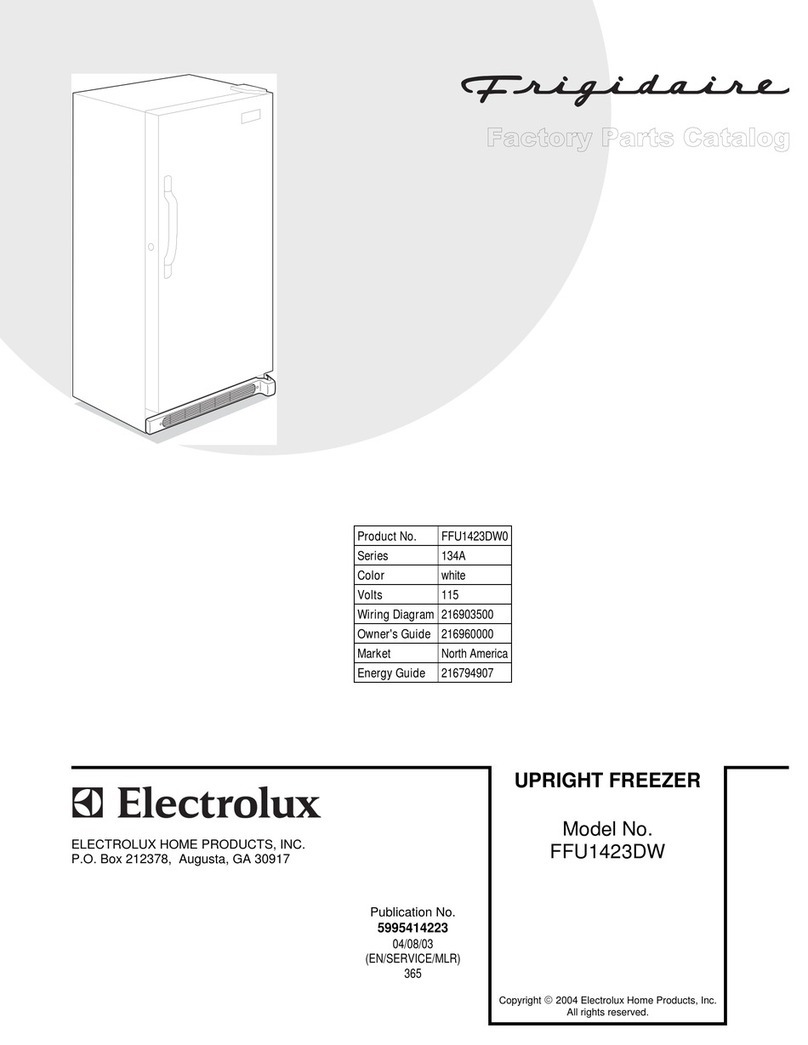
Frigidaire
Frigidaire FFU1423D Factory parts catalog

Grundig
Grundig GFRN 66820 user manual
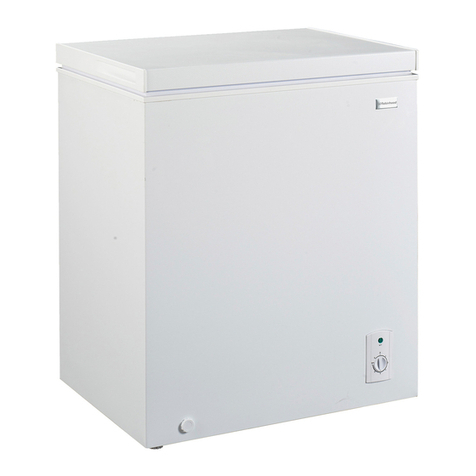
ROBINHOOD
ROBINHOOD RCFA147WH Installation and operating instructions
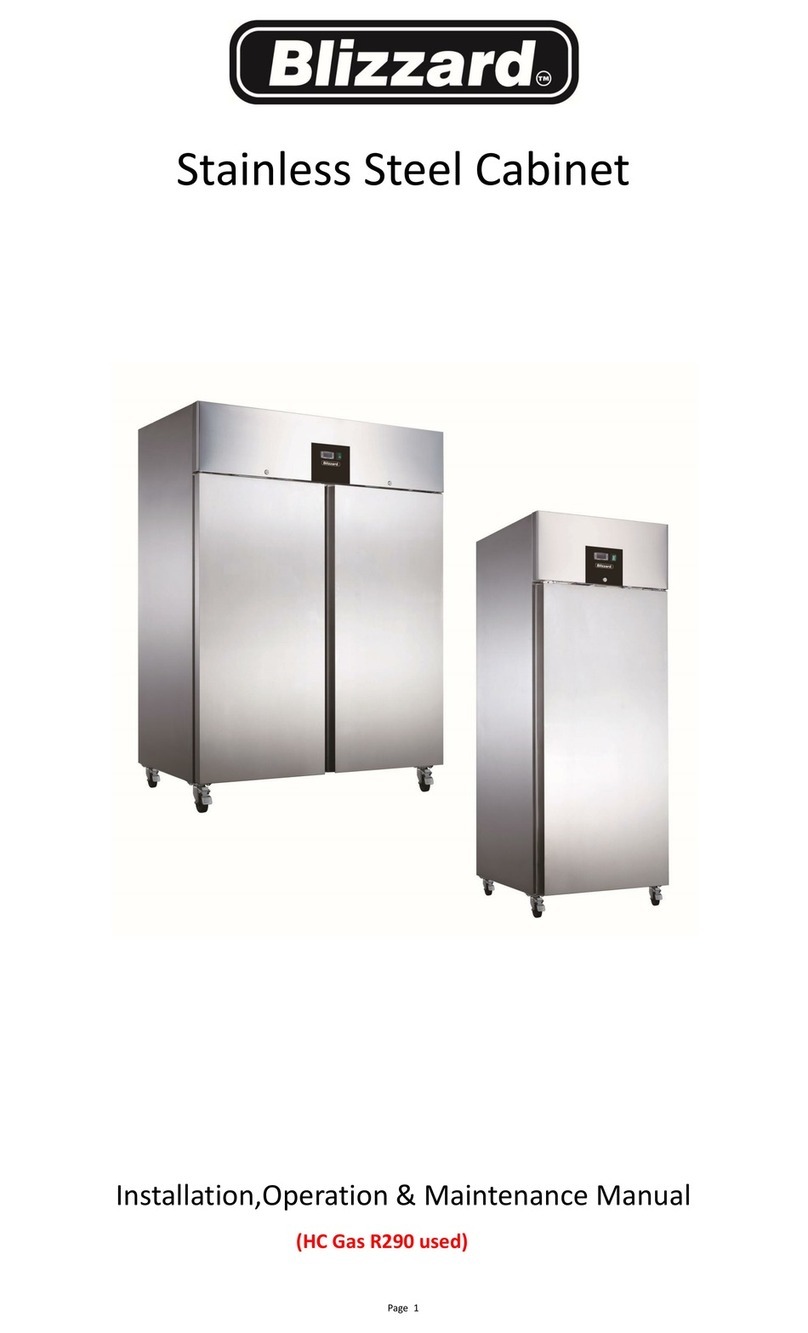
Blizzard
Blizzard BR1SS Installation, operation & maintenance manual
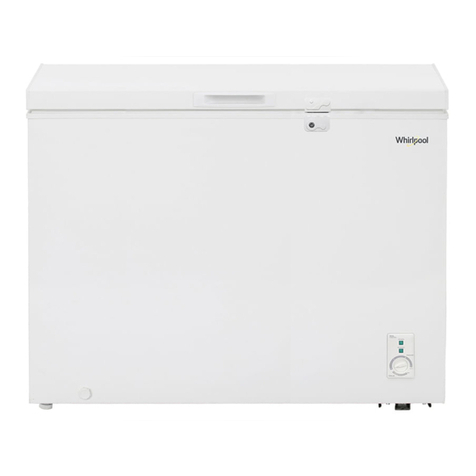
Whirlpool
Whirlpool WHA30 Use & care guide

Menuett
Menuett 006589 operating instructions

